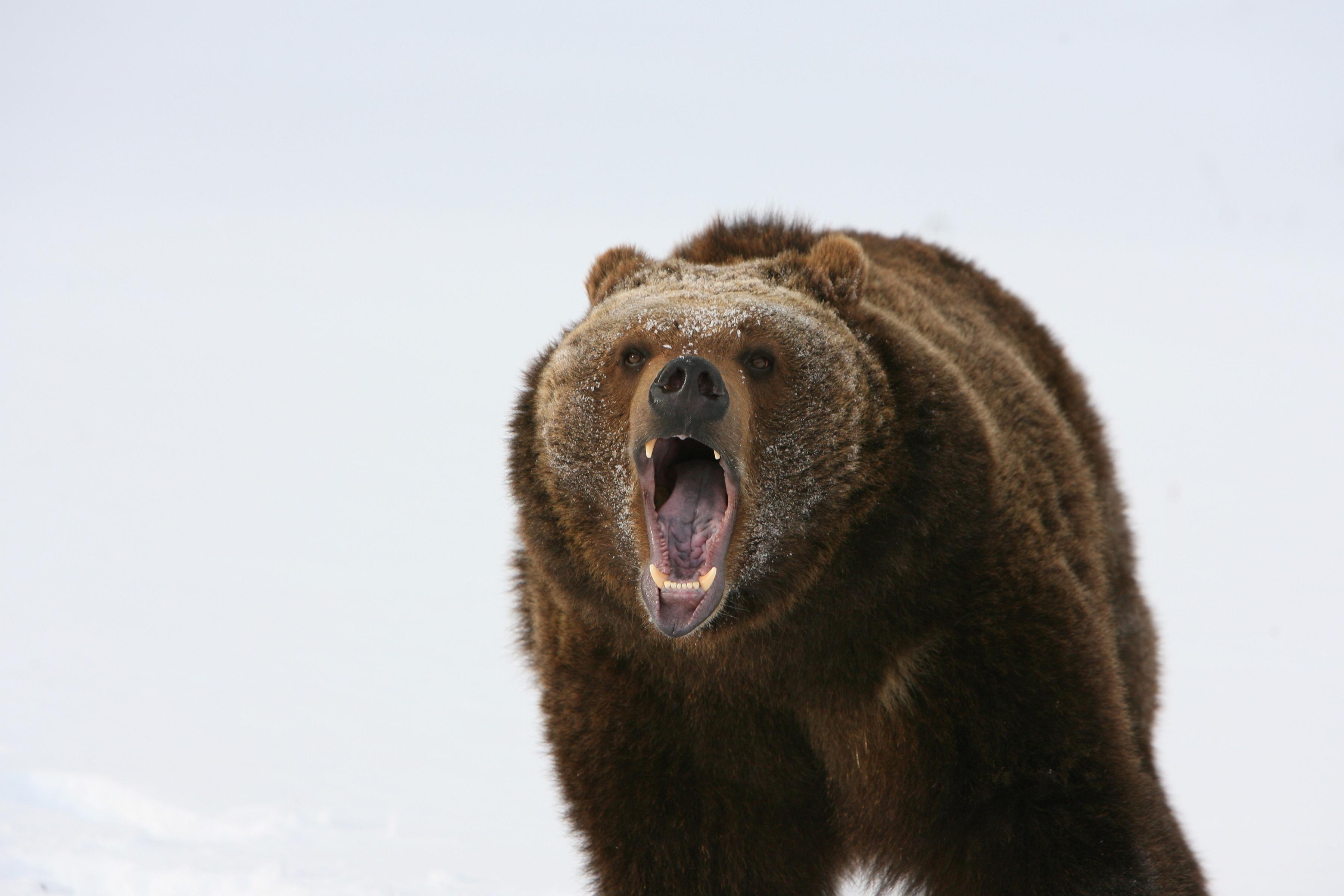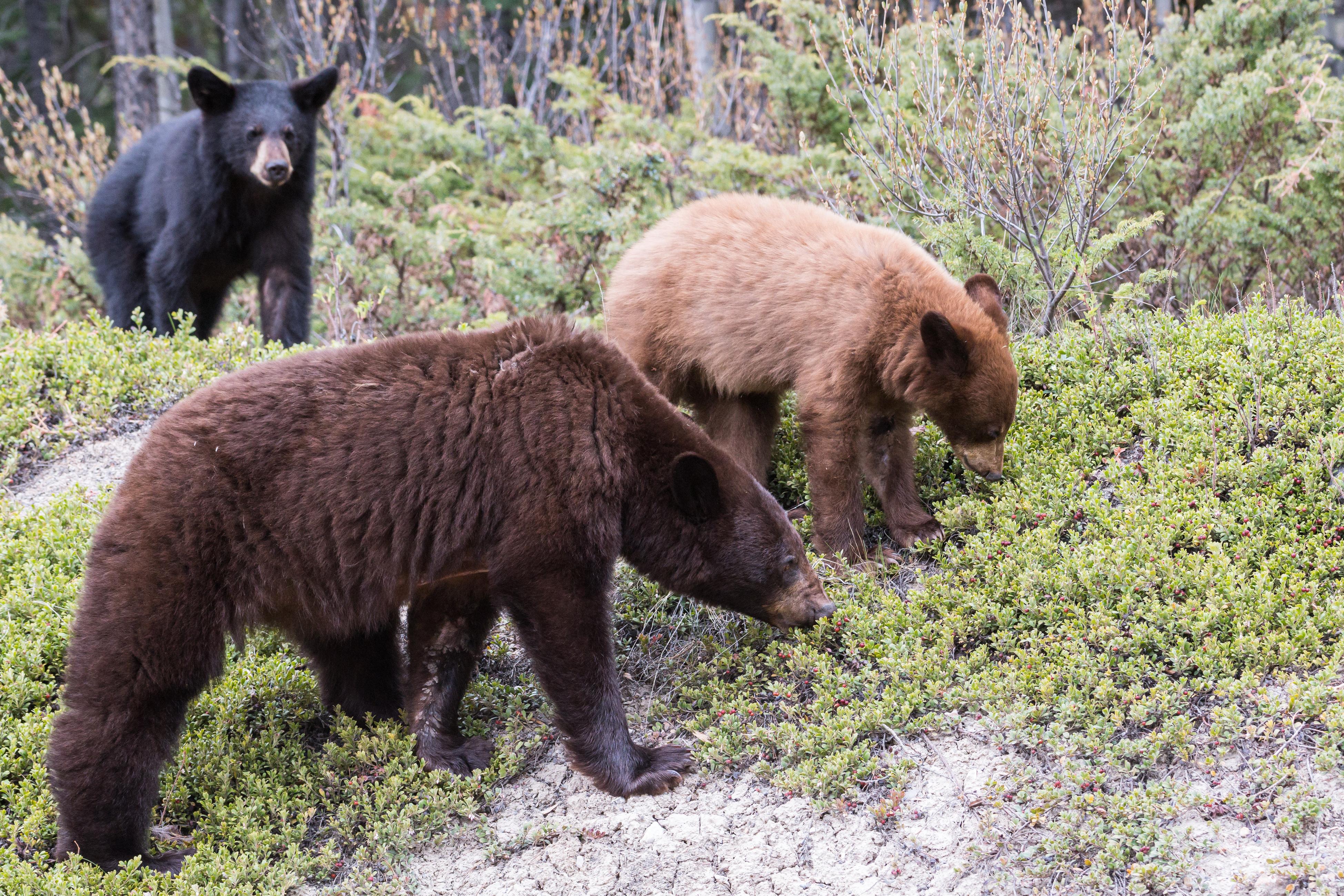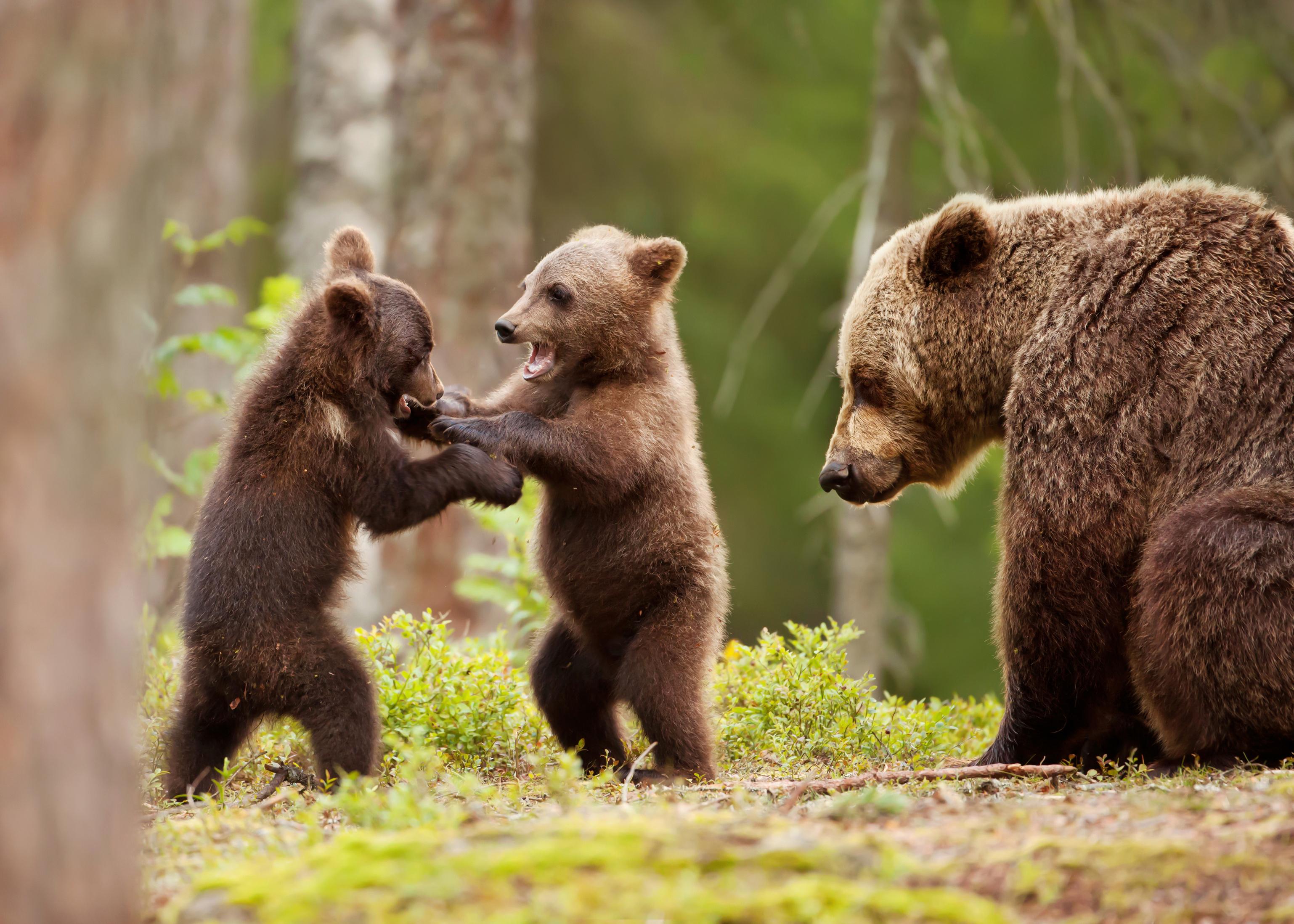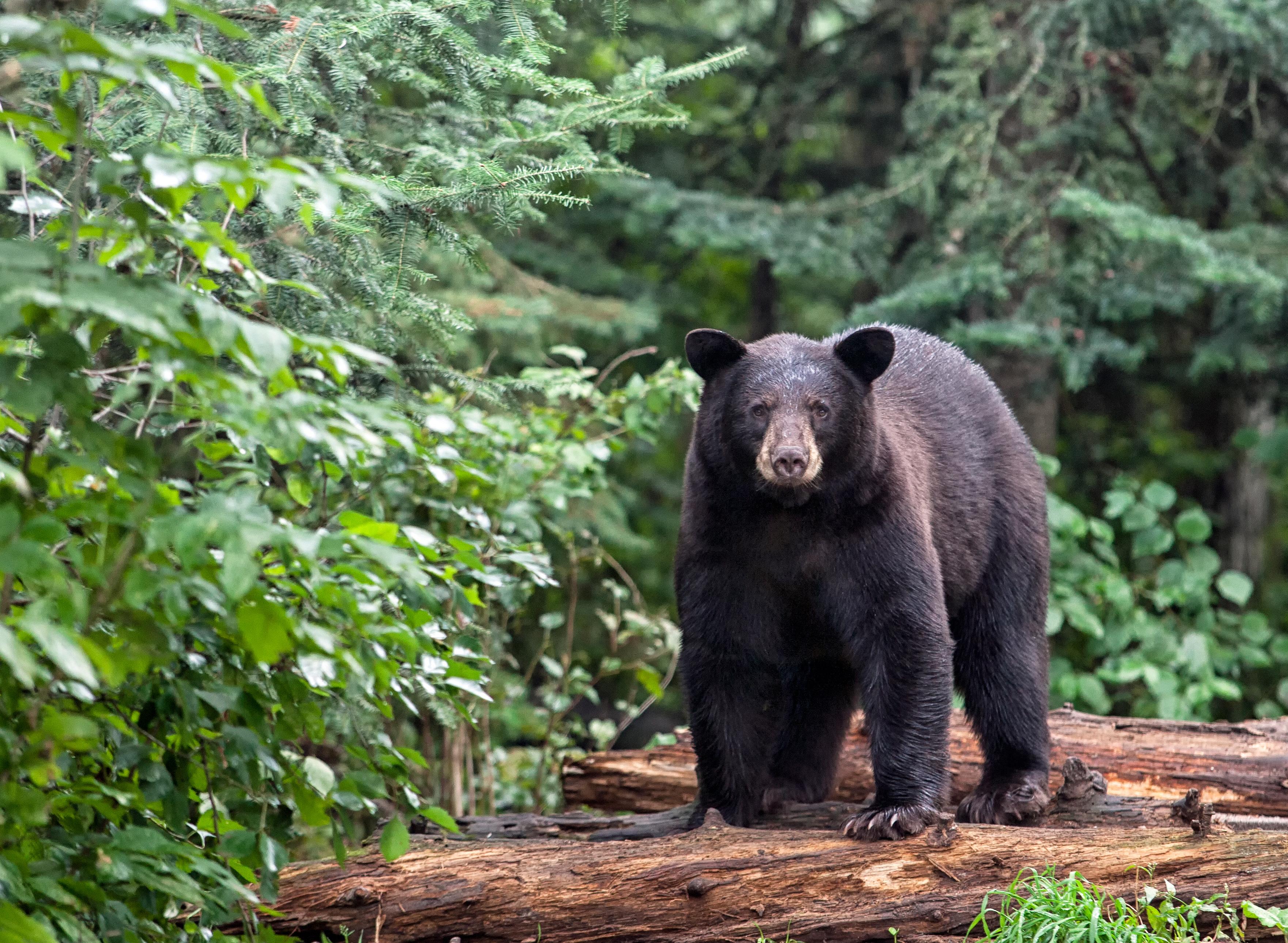
6 minute read
What should you do if you encounter a wild animal on the trail? Part three: Bears
Series By: Duke Brady, Survivalist
Duke Brady is back for part three of "What to do if you Encounter a Wild Animal on the Trail" and this time he is teaching us about bears. Duke is an environmental scientist, backcountry guide, and part time TV survival expert. He has trekked and "scienced" from the arctic shores of Alaska to the sweltering jungles of the tropics. He has spent some quality time out in nature, joining the food chain with a bit more zeal than an average day hike.
Advertisement

Bears: Should I Care?

As a Wilderness Guide in the often-trailless expanse of bear country, the most common question I get is: "How should I deal with a bear?" The first answer is always, Don't Run, followed by It Depends!
Which Bear is Best?
The two types of bears you're most likely to come across in North America are the American black bear and the brown bear, known as a "grizzly bear" due to the grizzled color of its fur. There are others that we won't focus on, such as the polar bear, but please email me if you're planning an arctic venture and we can chat. Additionally, the California grizzly subspecies went extinct in 1922 due to unmitigated hunting and human expansion beginning with the gold rush, yet it remains emblazoned on the Golden State's flag. No doubt a solemn symbol of where we've come from and a portentous reminder of consequence.

In any bear encounter, it will be critical to identify your bear. The American black bear, though more vast in number and range across the U.S. from Florida to Alaska, is typically smaller in size. But without extensive experience seeing both in the wild, as well as the potential color variation in dark brown bears and cinnamon black bears, other identifying features should be studied, such as the bridge of the nose and hump of the shoulder.
It is also crucial to know what kind of habitat you'll be venturing into. Understanding how that habitat has been anthropogenically affected (or changed by humans) is important for how you'll respond. For example, a black bear population adjacent to heavy human development will have a higher likelihood of associating humans with rewards, such as trash from a dumpster or crumbs from a trailside lunch break (LNT, people!), and therefore may be less predictable.
Let it Bear Known
As mentioned in previous articles, all wildlife deserve the heads up that you're in their territory. Making noise on the trail, like singing, talking with your buddies, or at least shouting "HikeItOff!" when approaching blind corners or dense flora, will help prevent a surprise encounter. Please note that "bear bells" and other similar devices, while great souvenirs, have mixed efficacy data; the natural variation of the human voice is the most reliable tool (and in my opinion, I don't know many who enjoy hearing the equivalent of Santa's reindeer jingling nonstop down the trail).
Close Encounters of the Fur Kind
So, you're being a good little hiker, making noise along the way and being situationally aware (i.e. you're louder near a babbling brook or in the whipping wind), and then...you see a bear! From my training with the National Park Service and first-hand encounters as a guide and field biologist, there are the recommended observations and actions:

1. WHERE is the bear?
What is the bear doing? Is the bear aware of my presence? If so, move to step 2. If not, -Try to remain off the bear's radar and adjust your travel plans to steer clear while maintaining as much visual contact as possible. You may have to just sit and wait to see where the animal is headed and what it's up to. This has led to canceled hikes and impromptu lunch breaks, as well as watching a grizzly sow nurse her cubs in the sun for an hour. Let your blessings be disguised!
If the animal is paying attention to you and not leaving on its own, this becomes your first call to action. The goal is to let the bear know you're not an interesting item: -Gather your people together, as one group. -Raise your arms, slowly and calmly waving them while -Talking in a calm but firm voice, and -Taking evasive action, backing away slowly.
3. The bear is coming NEAR!
If you have a bear aware of you and actively approaching, you will need to know what species you're dealing with (see above). But first, tattoo this on your brain: NEVER RUN! Running triggers their predator response, and all these proven steps below are out the window.

If it is a black bear: -Continue facing down the bear, as in step 2. -If the black bear makes advances toward you, increase your tone and volume towards a more aggressive posture, maintaining your position. -Begin defensive action if the bear continues advancing, such as throwing any nearby stones, sticks, or other non-reward items; having a designated person bend down to retrieve these things is best to maintain upright group appearance. -If contact is imminent, prepare to engage the most sensitive parts of the bear, such as its eyes and nose. Any defensive objects, such as pocket knives, tripods, hiking poles etc. should be at the ready. The American black bear does not typically "bluff charge", and their approach should be interpreted as predatory. -Continue fighting and do not stop if contact is made, do not "play dead".
If it is a grizzly bear: -Continue facing down the bear, as in step 2. -If the grizzly bear makes advances toward you, increase your tone and volume slightly but maintain your sense of calm as much as possible, maintaining your position. -Grizzly bears may "bluff charge" , and having experienced this first hand, I know it is difficult to NOT RUN, but you absolutely must maintain your position until the very last second. I have seen grizzlies make a couple sniffs after a bluff charge, within a hat's length of a person, and then amble off. -If a grizzly charges you, and contact appears ABSOLUTELY imminent, here is where you drop to the ground, face down, your pack still on, and hands clasped behind your neck. Slightly spreading your legs will make it harder for the bear to turn you over. -Remain still and quiet to convey you aren't a typical meal or threat in any way. -Only if the grizzly begins actively "feeding" should you begin to fight back, aiming for its sensitive facial areas with all your resources. There are many cases of grizzlies making physical contact, but losing interest and leaving after some exploratory actions.
It's always ideal to speak to local professionals about best practices for their specific bear populations and habitats, but the above framework is a good foundation to work from. There is also much to be discussed elsewhere on deterrents such as bear spray, which I always recommend. As long as we are continually learning from our encounters with wildlife, novel incidents, and scientific understanding of animal reaction to human presence, the complex answer to the simple question, "How do we deal with a bear?" , will remain "It Depends. " After all, it's the complexity of nature that demands our careful and intricate consideration.
That's all for this edition Duke's entertaining and hopefully useful guide to animal encounters. Have fun out there, respect nature, and always remember: situational awareness is your first defense! You can follow Duke and his adventures on Instagram here.





